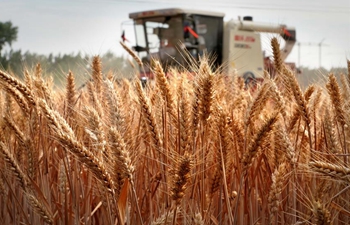HOUSTON, May 30 (Xinhua) -- Rising domestic crude oil production in the United States has created a need for more pipeline capacity, the U.S. Energy Information Administration (EIA) said on Thursday.
EIA recently launched a new liquids pipeline projects database that tracks more than 200 crude oil, hydrocarbon gas liquids (HGL), and petroleum products pipeline projects in the United States.
EIA said that according to the new database, U.S. crude oil production doubled between 2010 and 2018, with about 70 percent of that growth coming from the Gulf Coast region. U.S. Gulf Coast crude oil production grew from 5.2 million barrels per day (b/d) in 2014 to 7.1 million b/d in 2018, driven by production in the Permian Basin in western Texas and southeastern New Mexico.
As U.S. crude oil production increased, imports dropped off significantly. EIA observed that as import volumes declined, less pipeline capacity was needed from the Gulf Coast to the north of the country. New pipelines and reversals of existing pipelines originating in the Midwest are increasingly moving crude oil south to the Gulf Coast. More recently, increasing Permian crude production has outpaced pipeline takeaway capacity to bring the crude oil to market.
The increasing crude oil production and need for more pipeline transportation capacity prompted a large expansion of crude oil pipeline infrastructure, said EIA.
In the Gulf Coast region, nine intrastate crude oil pipeline projects have been announced or are under construction with in-service dates between 2019 and 2021. These projects are planned to move crude oil throughout the state of Texas and Louisiana to further alleviate regional constraints.













